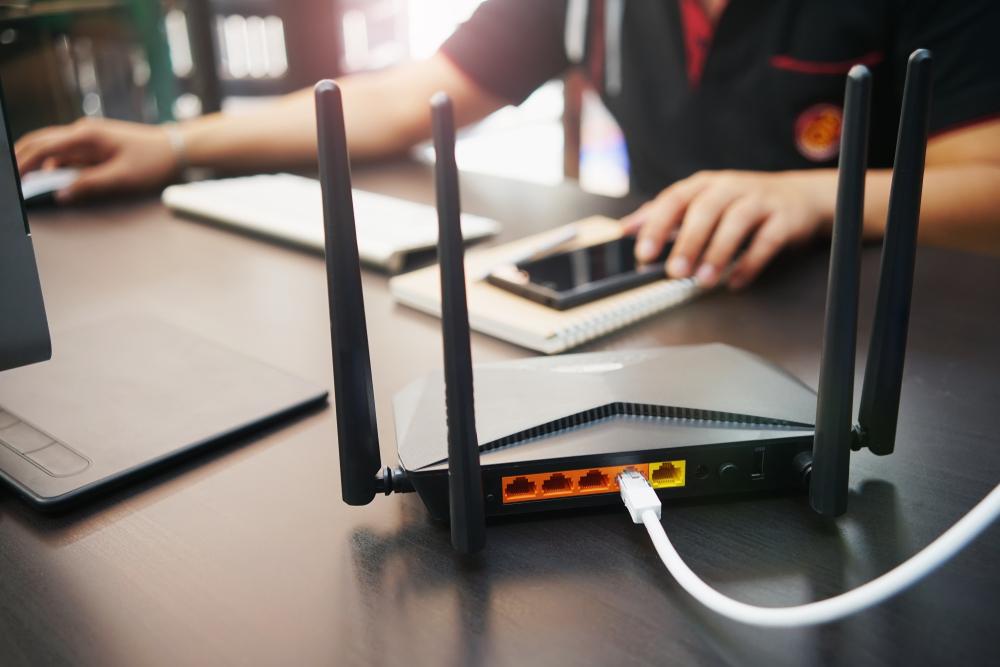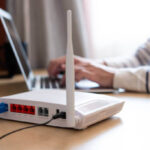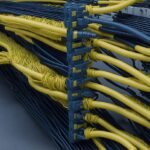Our digital lives are reliant on networks in today’s interconnected world. From streaming movies to remote working, networks are essential for the smooth functioning of all our online activities.
However, these networks’ performance is affected by various factors. In this article, we will explore some of the most common factors that can impact network performance in the UK.
It can be helpful to identify and address issues that are affecting your network by understanding these factors.
Bandwidth
A network’s bandwidth determines how much data can be transmitted over time. Insufficient bandwidth can affect network performance, causing slow loading times, buffering, and dropped connections.
The amount of bandwidth required depends on the type of network activity being performed. For example, streaming high-definition video requires significantly more bandwidth than checking email. To ensure optimal performance, it is important to have sufficient bandwidth for your specific needs.
Network Congestion
Network congestion occurs when there is too much data being transmitted over a network at the same time. This can cause delays and slower speeds, as data packets must wait for their turn to be transmitted.
Network congestion can be caused by various factors, including too many users on the same network, heavy usage during peak hours, and inefficient data routing. It is important to design networks with sufficient capacity and monitor usage patterns to avoid congestion to identify potential bottlenecks.
Read More: Network Switch Installation
Network Latency
It takes data to travel from one point to another on a network. It is affected by various factors, including distance, network congestion, and the quality of network components. High latency can cause delays, lag, and poor video quality, especially in real-time gaming and video conferencing applications.
To minimize latency, choosing high-quality network components, using efficient routing protocols, and selecting low-lay network connections are important.
Network Security
Network security is another critical factor that can affect network performance. Malware, viruses, and other security threats can cause network disruptions and slow performance.
It is important to have robust security measures, such as firewalls, antivirus software, and intrusion detection systems. Regular updates and patches can prevent security breaches and ensure optimal network performance.
Network Configuration
The configuration of a network can also impact its performance. Network configuration includes factors such as the network layout, the number and location of access points, and the quality of network cabling. network configuration can cause slow speeds, connectivity issues, and dropped connections. To optimize network configuration, working with experienced professionals who can design and implement a network that meets your specific needs is important.
Impact of Location and Weather
In addition to the above factors, the location of a network and weather conditions can also impact network performance. For example, networks in rural areas may need more access to high-speed internet, resulting in slow speeds and poor connectivity.Similarly, extreme weather conditions like thunderstorms and heavy rainfall can cause disruptions to networks, resulting in slower speeds and downtime.
Network performance is essential for a seamless online experience. Bandwidth, latency, network congestion, security, and network infrastructure are all factors that can impact network performance.
By understanding these factors and implementing solutions such as quality of service, network monitoring, and network performance testing, you can optimize your network’s performance and ensure a reliable and speedy online experience.
Stay tuned for the second half of this article, where we will discuss additional factors that impact network performance and explore more solutions for ensuring optimal network performance.In addition to the factors discussed in the first half of this article, several other factors can impact network performance.
Network Infrastructure
It plays a critical role in network performance. A well-designed and maintained network infrastructure can ensure optimal performance, while a poorly designed or outdated infrastructure can lead to performance issues.
Factors such as the type of cables, switches, and routers used and their configuration and maintenance can all impact network performance.
Network architecture
The architecture of a network refers to its design, including the layout of devices, connections, and protocols used. Well-designed network architecture can ensure efficient data transfer and optimal performance.
While a poorly designed architecture can lead to bottlenecks and performance issues, network architects should consider factors such as scalability, redundancy, and load balancing when designing network architecture.
Network protocols
It is another important consideration when it comes to network performance. Protocols are the rules that govern how data is transmitted over a network. There are many different network protocols, and choosing the right protocol for a particular application can significantly impact performance.
For example, Transmission Control Protocol (TCP) is a reliable protocol that ensures data is transmitted correctly but can be slow for certain applications. User Datagram Protocol (UDP), on the other hand, is faster but less reliable.
Physical Environment
The physical environment can also impact network performance. Physical factors such as temperature, humidity, and electromagnetic interference affect network performance.
For example, network equipment overheats can cause performance issues or even equipment failure. Proper environmental controls, such as air conditioning and humidity control, can help to prevent these issues.
Human Factors
This factor can impact network performance. For example, user behavior can impact network performance, such as when employees use bandwidth-intensive applications or engage in high-bandwidth activities like streaming videos.
Additionally, a human error such as misconfiguring network devices or failing to update the firmware can lead to performance issues. Proper training and education for network users and administrators can help to mitigate these risks.
How to Address these Network Factors
To ensure optimal network performance, it’s important to take a holistic approach that addresses these factors. This can involve implementing solutions such as network monitoring, performance testing, and security measures and considering factors such as network architecture, protocols, physical environment, and human behavior.
Several best practices can help to optimize network performance, including regular maintenance and updates, bandwidth management, and load balancing. By staying up-to-date with the latest technologies and best practices and seeking professional advice when necessary, you can ensure optimal network performance and a seamless online experience.
Conclusion
In conclusion, network performance is affected by various factors, including bandwidth, network congestion, latency, security, configuration, location, and weather in UK. Understanding these factors can help you identify and address issues.
Network performance is a complex and multifaceted issue that requires a holistic approach. You can ensure reliable and speedy network performance by considering all the factors that impact network performance and implementing solutions and best practices to address them.
So take the time to assess your network’s performance, identify areas for improvement, and take proactive measures to optimize your network’s performance for all your digital needs.
Read More: Wifi Installation services uk







